#incilius
Explore tagged Tumblr posts
Text

Evergreen Toad aka Green Climbing Toad (Incilius coniferus), family Bufonidae, Costa Rica
photograph by Jean Bonilla (@wildlife_journeys_cr)
611 notes
·
View notes
Note



hi sir. here��s some gulf coast toads i’ve recently found in my backyard.
Gosh I love a high-contrast toad. That first one is beautiful!
185 notes
·
View notes
Text



#poll#Class: Amphibia#Order: Anura#Family: Bufonidae#Genus: Incilius#Incilius Valliceps#Range: Neotropical
22 notes
·
View notes
Text
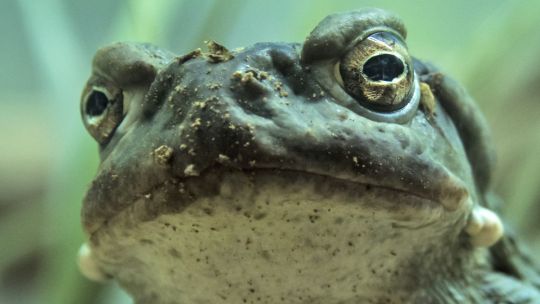
Colorado River toad
Plenty of amphibians excrete toxins through their skin as protection against predators, but none may be as strange as the Colorado River toad, also known as the Sonoran desert toad (Incilius alvarius). This toad, found in the southwestern United States and northern Mexico, produces a hallucinogen called 5-methoxy-N,N-dimethyltryptamine (5-MeO-DMT).
(Image credit: Mark Newman)
#mark newman#photographer#colorado river toad#toad#amphibian#toxins#poisonous#animal#sonoran desert toad#incilius alvarius#mexico#united states#nature
17 notes
·
View notes
Text

0 notes
Text

Marbled toad (Incilius marmoreus) By: William E. Duellman From: Living Amphibians of the World 1966
45 notes
·
View notes
Text

this gulf coast toad (Incilius nebulifer) hopped right in front of me and let me take its portrait!
139 notes
·
View notes
Text
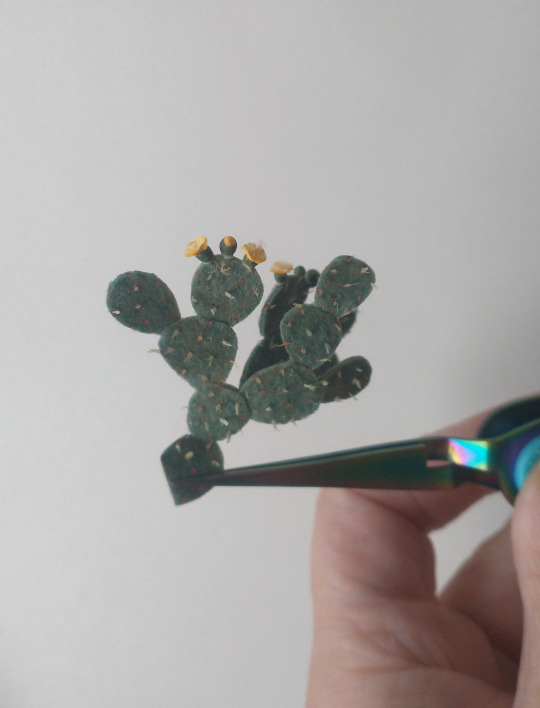
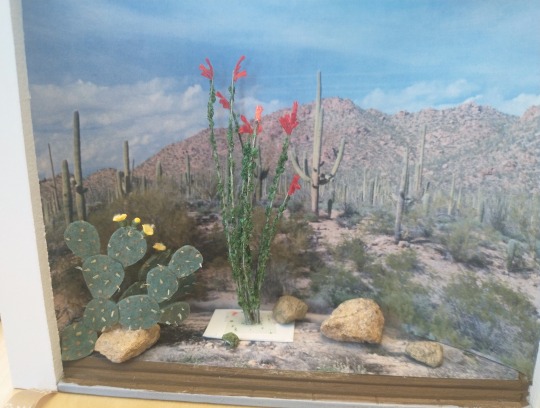
Finished an Opuntia cactus for my Sonoran desert plant diorama.
(diorama in 1:24 scale: Opuntia engelmannii; ocotillo, Fouquieria splendens; Colorado River toad, Incilius alvarius)
123 notes
·
View notes
Text


Evergreen Toad aka Green Climbing Toad (Incilius coniferus), male, family Bufonidae, Costa Rica
photograph by Diego Aviles
236 notes
·
View notes
Photo

Sonoran Desert Toad (Incilius alvarius)
Family: True Toad Family (Bufonidae)
IUCN Conservation Status: Least Concern
As deserts, by definition, experience very little rainfall they are typically poorly suited to supporting amphibians (which typically require water to support their aquatic larvae and keep their thin, fragile skin damp,) and as such any amphibians that do inhabit desert habitats will be highly adapted to survive with limited or inconsistent access to water. The Sonoran Desert Toad is one such species: it inhabits desert and semi-desert environments throughout northwestern Mexico and the southwestern USA, and endures the aridity of the desert surrounding it by remaining close to what few bodies of water are present (primarily streams, although members of this species may also gather where humans have created unnatural bodies of water such as canals and reservoirs), absorbing water through its skin via a specialist region of its pelvis known as a seat patch. Chiefly nocturnal, Sonoran Desert Toads spend the day sheltering from heat and predators (often in the abandoned burrows of small rodents,) and emerge at night to search for prey such as lizards, rodents, smaller desert amphibians and a variety of arthropods. Members of this species may breed at any time of year but are most receptive to breeding during their range’s rainy season (which lasts between July and August), and as with most toads their eggs are deposited in enormous numbers in gelatinous strings, which are attached to submerged surfaces in shallow ponds, streams, temporary pools or man-made bodies of water. As is true of all true toads the back and nape of a Sonoran Desert Toad is lined with numerous wart-like glands that secrete a poison potent enough to cause illness, paralysis and potentially death if ingested, but some predators (such as the Common Raccoon) have learned to bypass these defences by carefully flipping the toad onto its back, exposing its vulnerable underbelly. The poison of the Sonoran Desert Toad, if inhaled as a vapour or ingested in very small quantities, is noted to have a psychoactive effect on humans (causing intense visual and auditory hallucinations and a strange sensation of warmth and well-being) and this has led to the deliberate ingestion of the poison of this and some related species as a drug or form of folk medicine, although as the ingestion of the species’ poison has no proven medical benefits, has been linked to multiple deaths and has the potential to create a demand for Sonoran Desert Toads among poachers this practice is both ill-advised and increasingly restricted (with the removal of a Sonoran Desert Toad from its native range now being illegal in the USA, for the protection of both the toads and those that may wish to ingest their poison.)
--------------------------------------------------------------------------
Image Source: https://www.inaturalist.org/taxa/65828-Incilius-alvarius
#Sonoran desert toad#colorado river toad#toad#toads#frog#frogs#amphibian#amphibians#zoology#biology#herpetology#herpetofauna#animal#animals#wildlife#north american wildlife#desert wildlife
139 notes
·
View notes
Text
Some lore on my (supposed to be) main worldbuilding/spec evo project Batrachiterra.
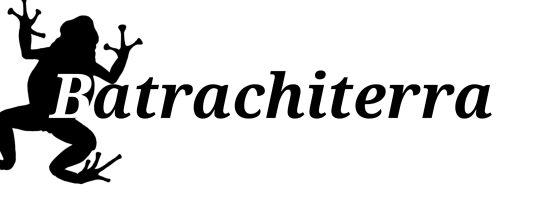
In the not-so-distant future, humans have technologically advanced quite a bit, principally in terms of space travel. Humans can terraform Earth-sized planets and moons at their will, using their new homes to live, mine metals, farm animals, plants, and study certain substances, components, fauna, diseases, and even weapons in a controlled ambient environment. Such an environment is the planet Frog world. Frog World, frog's world, Frog world, many names are used to refer to the planet Heqet, in a close solar system where humans settled in to study frogs. But why study frogs? The enterprise that did this process of terraformation, called Batrachotechnologies, began the project in order to study, breed, and preserve frog species that became endangered on Earth. They aimed not only to preserve frogs but also study their poison, the batrachotoxin, in order to make vaccines, medicines and antidotes against diseases and poisons respectively. They brought to the planet the following frog species: The genus Dendrobates commonly known as poison dart frogs, the Cane toad Rhinella marina, Giant leaf frog Phyllomedusa bicolor, the Common toad Bufo bufo, and the Colorado river toad Incilius alvarius.
The terraformation was done trough some decades, the process started when the first spacial stations settled in the solar system. The atmosphere of the planet was very similar to Earth's one, but it still needed to be changed, massive machines called 437H3-R were sent to produce gases such as oxygen in high quantities. Later on, more machines were sent, now the L1L1-P0D's, who bred phyto-plankton such as algae, an important component in order to stay with the oxygen levels alright. But L1L1-P0D's also bred Zoo-plankton needed to keep the numbers of algae in check. Then it was time for "greater" life get in, drones nicknamed 533D-3R launched spores of mosses, lichens, ferns and fungi in the continents, "pioneer species" who helped to break down nutrients from rocks, a necessary thing in order to get trees in the planet later on. But in the seas life seeded was more diverse, aquatic plants and animals were seeded to kind of establish the ecosystems of the oceans. Why "kind of"? Detritivores and primary consumers were added, but, for unknown reasons, no fish species was added, so, the ecosystems were kind of incomplete.
Then the last part of the seeding process started, once the pioneer species did their job the long term species came in. Trees, vines, grasses and bromeliads were seeded, and following them invertebrates too, such as pollinators and their predators.
The terraformation thus proceeded, and humans and frogs could now settle in to start research and breeding respectively.
However, the plans to peacefully research the poisons were suddenly changed, the enterprise was purchased by an ex-military who aimed to use the research to make bio-weapons and sell them to violent organizations suchs as mafias and terrorists, the GCL: Galactic Council of Life, discovered the plans of the new owner and proceeded to interrupt the enterprise, locking their access to the solar system, evacuating the planet and leaving the new inhabitants of the planet to their own luck, in order to adapt, evolve, and thrive, on the planet of frogs.
~~~
Batrachiterra will follow the path of evolution in this terraformed world and see what wonders will emerge in the natural history of the planet Heqet after the new residents establish themselves in a competition-free ecosystem and adapt to fill its various empty niches.
#worldbuilding#batrachiterra#speculative biology#spec evo#speculative zoology#spec bio#speculative evolution
34 notes
·
View notes
Text
Excerpt:
While in the military stationed in Georgia, Nelson read a magazine article in the August 1981 Omni summarizing an archeologist’s work on an excavation dig that unearthed 10,000 toad bones. Nelson was fascinated by the possibility of a psychedelic toad and began researching potential candidates. The preface to the new, authorized edition of the pamphlet explains: “In the Department of Life Sciences at the University of North Texas [Nelson] encountered the work of Italian toxicologist Dr. Vittorio Erspamer, whose comprehensive chemical analysis of toad venoms showed that among the 40 species he analyzed from the genus Bufo, a single one, Bufo alvarius (syn. Incilius alvarius), was capable of biosynthesizing 5-MeO-DMT.”
Nelson’s first trek to Arizona proved toadless, as the toads estivate beneath the topsoil until the monsoon season. On the second road trip, Nelson gassed up his white Chevy sport van with his then-girlfriend Pat and a collie named Quanah and drove to the Sonoran Desert after the start of the rainy season in 1983.
Quanah spotted the first toad. Nelson sprung into action, grabbing the toad before “milking” the glands on the neck and limbs, spattering the toad’s venom on the van’s windshield. When the “viscous milky-white” venom dried, Nelson smoked it.
Fascinating story! Click above to read on...
13 notes
·
View notes
Quote
北米西部に広がるソノラ砂漠では、夏の北米モンスーンによる雨の気配が漂うと、コロラドリバーヒキガエル(Incilius alvarius)が地下の巣穴から出てくる。 背が高く腕があるサボテンのベンケイチュウや、砂漠をのし歩くリクガメのソノラゴファーガメと同じく、このヒキガエルたちはソノラ砂漠固有の生物だと、ツーソン爬虫両生類学会の会長であり、ツーソン砂漠研究所の研究員であるロバート・ビラ氏は説明する。 「コロラドリバーヒキガエルの存在そのものがソノラ砂漠を特徴づけています」と氏は話す。「彼らがいなくなったら、ソノラ砂漠は生物文化的に乏しくなってしまいます」 ビラ氏によれば、コロラドリバーヒキガエルは現時点で絶滅の危機にあるわけではない。しかし、気候変動や人間の活動域の拡大、環境汚染がもたらす脅威は高まっている。 それだけではない。ツーソン爬虫両生類学会の「ヒキガエルを救おう」キャンペーンの広報担当者でもあるビラ氏はよく熟知しているように、コロラドリバーヒキガエルはより直接的な危機に直面している。 なぜなら、コロラドリバーヒキガエルは強力な幻覚剤「5-MeO-DMT」を分泌するため、娯楽や利益めあての密猟者たちに探し回られているからだ。
ハイになれるヒキガエル、幻覚剤めあての密猟者が脅威に | ナショナル ジオグラフィック日本版サイト
3 notes
·
View notes
Text
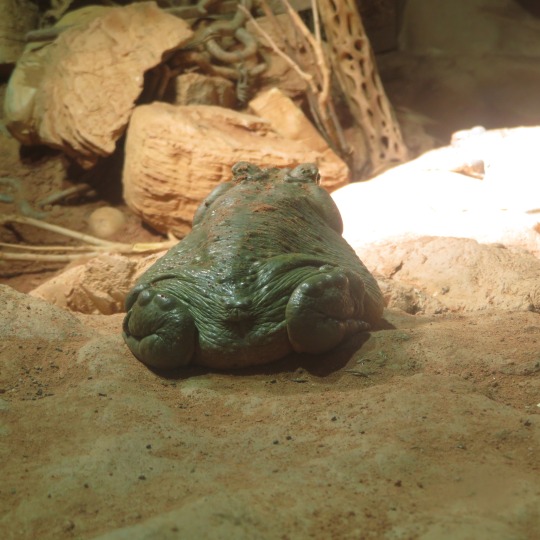
"Ich will nicht fotografiert werden!" 😡 "I don't want to be photographed!"
Colorado-Kröte | Colorado River toad or Sonoran Desert toad
Incilius alvarius
[Hagenbecks Tropenhaus]
#ColoradoKröte#ColoradoRivertoad#SonoranDeserttoad#Inciliusalvarius#Kröte#Toad#HagenbecksTropenhaus#Hagenbeck#Hamburg#Terrarium
4 notes
·
View notes
Text

Evergreen Toad (Incilius coniferus), family Bufonidae, Costa Rica photograph by Peter Soltys
0 notes
